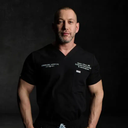I been wanting to do lip filler for a long time and I am just now finding more information about the lip lift procedure I feel like this would balance my face, my length between my lip and my nose is pretty long. Is there a way to get scar treatment for under the nose? Is it usually bumpy where the scar is?
Answers (8)
From board-certified doctors and trusted medical professionals
Dr. Jonathan Kulbersh, MD

Dr. Jonathan Kulbersh, MD
Board Certified Facial Plastic Surgeon
Answer
Dr. Jason Emer, MD

Dr. Jason Emer, MD
Dermatologic Surgeon, Board Certified in Dermatology
Answer
Dr. Gary Linkov, MD

Dr. Gary Linkov, MD
Board Certified Facial Plastic Surgeon
Answer
Dr. Gary M. Horndeski, MD

Dr. Gary M. Horndeski, MD
Board Certified Plastic Surgeon
Answer
Dr. Stephen J. Pincus, MD

Dr. Stephen J. Pincus, MD
Board Certified Facial Plastic Surgeon
Answer
Dr. Nelson Castillo, MD

Dr. Nelson Castillo, MD
Board Certified Plastic Surgeon
Answer
Dr. Ricardo L. Rodriguez, MD

Dr. Ricardo L. Rodriguez, MD
Board Certified Plastic Surgeon
Answer
Dr. Gurkan Kayabasoglu, MD
Dr. Gurkan Kayabasoglu, MD
Facial Plastic Surgeon
Answer
More Lip Lift Questions
See all Lip Lift Q&AWE SEND PRETTY
EMAILS
What’s trending? Who’s turning heads? Which TikTok myths need busting? We’ve got you. No fluff, no gatekeeping—just real talk. Get our free, unfiltered newsletter.
